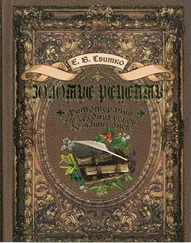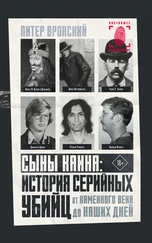Goldberg, E., and L. D. Costa Hemisphere differences in the acquisition and use of descriptive systems // Brain Language 14 (1981): 144–173.
Hawkins, J., and S. Blakeslee On Intelligence. New York: Henry Holt, 2004.
Hebb, D. O. Organization of Behavior. New York: John Wiley and Sons, 1949.
Jackson, J. H. Loss of speech: Its association with valvular disease of the heart, and with hemiplegia on the right side. Defects of smell. Defects of speech in chorea. Arterial regions in epilepsy // London Hospital Reports Vol. 1 (1864): 388–471.
Jamison, K. R. Exuberance: The Passion for Life. New York: Vintage Books; Random House, 2004.
Jung-Beeman, M. Bilateral brain processes for comprehending natural language // Trends in Cognitive Sciences 9 (11) 2005: 512–518.
Jung-Beeman, M., Bowden, E. M., Haberman, J., Frymiare, J. L., Arambel-Liu, S., Greenblatt, R., Reber, P. J., and J. Kounios Neural activity observed in people solving verbal problems with insight // PloS Biology 2 (4) 2004: 0500–0510.
Kapur, N. Paradoxical functional facilitation in brain-behavior research // Brain 119 (1996): 1775–1790.
Katz, B. Stephen William Kuffler // Biographical Memoirs of Fellows of the Royal Society 28 (1982): 225–259.
Kounios, J., Fleck, J. I., Green, D. L., Payne, L., Stevenson, J. L., Bowden, E. M., and M. Jung-Beeman The origins of insight in resting-state brain activity // Neuropsychologia 46 (2007): 281–291.
Kounios, J., Frymiare, J. L., Bowden, E. M., Fleck, J. I., Subramaniam, K., Parrish, T. B., and M. Jung-Beeman The prepared mind: Neural activity prior to problem presentation predicts solution by sudden insight // Psychological Science 17 (2006): 882–890.
Lehrer, J. The Eureka hunt: Why do good ideas come to us when they do? // New Yorker, July 28, 2008: 40–45.
Martin, A., Wiggs, C. L., and J. Weisberg Modulation of human medial temporal lobe activity by form, meaning, or experience // Hippocampus 7 (1997): 587–593.
Martinsdale, C. The Biological Basis of Creativity / In: Handbook of Creativity . R. J. Steinberg, ed. New York: Cambridge University Press, 1999.
McMahan, U. J., ed. Steve: Remembrances of Stephen W. Kuffler. Sunderland, MA: Sinauer Associates, 1990.
Miller, A. I. Insights of Genius: Imagery and Creativity in Science and Art. New York: Copernicus, 1996.
Miller, E. K., and J. D. Cohen An integrative theory of prefrontal cortex function // Annual Review of Neuroscience 24 (2001): 167–202.
Orenstein, R. The Right Mind: Making Sense of the Hemispheres. New York: Harcourt Brace, 1997.
Rabinovici, G. D., and B. L. Miller Frontotemporal lobar degeneration: Epidemiology, pathophysiology, diagnosis and management // CNS Drugs 24 (5) 2010: 375–398.
Ramachandran, V. S., and W. Hirstein The science of art: A neurological theory of aesthetic experience // Journal of Consciousness Studies 6 (6–7) 1999: 15–51.
Ramachandran, V. S. The Emerging Mind. The Reith Lectures. London: BBC, Profile Books, 2003.
Ramachandran, V. S. A Brief Tour of Human Consciousness: From Impostor Poodles to Purple Numbers. New York: Pearson Education, 2004.
Rubin, N., Nakayama, K., and R. Shapley Abrupt learning and retinal size specificity in illusory-contour perception // Current Biology 7 (1997): 461–467.
Sacks, O. An Anthropologist on Mars: Seven Paradoxical Tales. New York: Alfred A. Knopf, 1995.
Schooler, J. W., Ohlsson, S., and K. Brooks Thoughts beyond words: When language overshadows insight // Journal of Experimental Psychology 122 (1993): 166–183.
Schopenhauer, A. Essays and Aphorisms (1851). London: Penguin Books, 1970.
Sherrington, C. S. The Integrative Action of the Nervous System. New Haven: Yale University Press, 1906.
Sinha, P., Balas, B., Ostrovsky, Y., and R. Russell Face recognition by humans: Nineteen results all computer vision researchers should know about // Proceedings of the IEEE 94 (11) 2006: 1948–1962.
Smith, R. W., and J. Kounios Sudden insight: All-or-none processing revealed by speed-accuracy decomposition // Journal of Experimental Psychology 22 (1996): 1443–1462.
Snyder, A. Explaining and inducing savant skills: Privileged access to lower level, less processed information // Philosophical Transactions of the Royal Society B 364 (2009): 1399–1405.
Subramaniam, K., Kounios, J., Parrish, T. B., and M. Jung-Beeman A brain mechanism for facilitation of insight by positive affect // Journal of Cognitive Neuroscience 21 (3) 2008: 415–432.
Treffert, D. A. The savant syndrome: An extraordinary condition. A synopsis: Past, present, and future // Philosophical Transactions of the Royal Society 364 (2009): 1351–1357.
Warrington, E., and E. M. Taylor Two categorical stages of object recognition // Perception 7 (1978): 695–705.
Yarbus A. L. Eye Movements and Vision. New York: Plenum Press, 1967.
Глава 31. Талант и развитие мозга
Akiskal, H. S., and G. B. Cassano, eds. Dysthymia and the Spectrum of Chronic Depressions. New York: Guilford Press, 1997.
Andreasen, N. C. The Creating Brain: The Neuroscience of Genius. New York: Dana Press, 2005.
Baron-Cohen, S., Ashwin, E., Ashwin, C., Tavassoli, T., and B. Chakrabarti Talent in autism: Hyper-systemizing, hyper-attention to detail and sensory hypersensitivity // Philosophical Transactions of the Royal Society 364 (2009): 1377–1383.
Bleuler, E. Textbook of Psychiatry . New York: Macmillan, 1924.
Enard, W., Przeworski, M., Fisher, S. E., Lai, C. S., Wiebe, V., Kitano, T., Monaco, A. P., and P. Svante Molecular evolution of FOXP2, a gene involved in speech and language // Nature 418 (2002): 869–872.
Frith, U., and F. Happe The beautiful otherness of the autistic mind // Philosophical Transactions of the Royal Society 364 (2009): 1345–1350.
Gardner, H. Frames of Mind: The Theory of Multiple Intelligences. New York: Basic Books, 1983.
Gardner, H. Art, Mind, and Brain: A Cognitive Approach to Creativity. New York: Basic Books, 1984.
Gardner, H. Creating Minds: An Anatomy of Creativity Seen Through the Lives of Freud, Einstein, Picasso, Stravinsky, Eliot, Graham, and Gandhi. New York: Basic Books, 1993.
Gombrich, E. The miracle at Chauvet // New York Review of Books 43 (18) 1996.
Gross, C. G. Left and Right in Science and Art / In: A Hole in the Head: More Tales in the History of Neuroscience . Cambridge, MA: MIT Press, 2009. Pp. 131–160.
Happe, F., and P. Vital What aspects of autism predispose to talent? // Philosophical Transactions of the Royal Society 364 (2009): 1369–1375.
Heaton, P., Pring, L., and B. Hermelin Autism and pitch processing: a precursor for savant musical ability // Music Perception 15 (1998): 291–305.
Hermelin, B. Bright Splinters of the Mind. A Personal Story of Research with Autistic Savants . London: Jessica Kingsley, 2001.
Holton, G. The Scientific Imagination: Case Studies. London: Cambridge University Press, 1978.
Howlin, P., Goode, S., Hutton J., and M. Rutter Savant skills in autism: Psychometric approaches and parental reports // Philosophical Transactions of the Royal Society 364 (2009): 1359–1367.
Humphrey, N. Cave art, autism and the evolution of the human mind // Cambridge Archeological Journal 8 (1998): 165–191.
Читать дальше
Конец ознакомительного отрывка
Купить книгу







![Франк Трентманн - Эволюция потребления [Как спрос формирует предложение с XV века до наших дней]](/books/403210/frank-trentmann-evolyuciya-potrebleniya-kak-spros-fo-thumb.webp)




